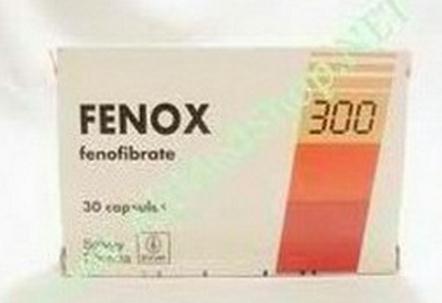Fenofibrate Side Effects
Fenofibrate is a medication used for the treatment of high cholesterol levels and reduces the risk for cardiovascular diseases. Fenofibrates belong to the class of fibrate drugs. It is commonly used alone or together with other drugs such as statins that are also used to reduce cholesterol levels.
Uses and Advantages of Fenofibrate
Fenofibrate is usually the second line therapy for hypertriglyceridemia and hypercholesterolemia. It exerts it effects by reducing the triglyceride levels, the low density lipoproteins (LDL) and the very low density lipoproteins (VLDL). An advantage of fenofibrate is it also raises the levels of the high density lipoproteins (HDL) or the good cholesterol, which reduces the risk for heart diseases.
Aside from these effects, fenofibrate is also used for the management of gout because it lowers the uric acid levels as well as acts as a blood thinner because of its role in lowering the fibrinogen in the blood.
Fenofibrate Side effects
The presence of various Fenofibrate side effects is the main reason for drug discontinuation in patients. Fenofibrate causes various side effects including:
1. Gastrointestinal Fenofibrate Side effects
Nausea and Vomiting
A common side effect of fenofibrate is nausea and vomiting. These may be related to increased elimination of cholesterol through the GIT. The presence of cholesterol in the intestines seems to trigger nausea and vomiting.
Abdominal pain and flatulence
The excretion of cholesterol in the GIT also causes increased gas and abdominal distention leading to flatulence and pain.
Diarrhea
Diarrhea may also be a Fenofibrate side effect as a result of intestinal excretion of cholesterol.
2. Dermatologic Fenofibrate Side effects
Pruritus
Patients taking fenofibrate may also suffer from pruritus or itchiness in the skin. This may be traced on the cholesterol excretion in bile that may lead to bile stasis and subsequently cause circulating bile in the skin.
Rashes or urticaria
The development of rashes is also a common Fenofibrate side effect. Up to 2% of clients discontinued fenofibrate use because of the appearance of rash.
Photosensitivity Reactions
The derivatives and metabolites of fenofibrate seem to induce photosensitivity reactions when deposited on the skin.
3. Hepatic Fenofibrate Side effects
Hepatotoxicity
Hepatotoxicity is observed in patients receiving more than 134 mg of fenofibrate in a day for prolonged periods similar to Estradiol side effects. Presence of active hepatitis and liver cirrhosis were also observed in some patients taking fenofibrate.
Cholelithiasis
Cholelithiasis or gallstones is also a possible side effect of fenofibrate. This results in the increased bile excretion of cholesterol that leads to crystallization and stone formation in the gallbladder.
4. Renal Fenofibrate Side effects
Renal failure
Fenofibrate breaks down into its active metabolite, which is fenofibric acid. When fenofibric acid accumulates in the kidneys, it causes destruction of the organ over time.
5. Musculoskeletal Fenofibrate Side effects
Rhabdomyolysis
Rhabdomyolysis is a potential life-threatening Fenofibrate side effect. This involves the breakdown of the muscle fibers as a result of accumulation of fenofibric acid in the muscle tissues. Patients should observe for muscle pain, tenderness, weakness, dark urine and increased creatinine kinase because these signify muscle fiber destruction. This Fenofibrate side-effect seems to be increased along with the use of statins.
6. Cardiovascular Fenofibrate Side effects
Arrhythmia
Fenofibrate also have caused arrhythmias in up to 1% of patients although the exact cause is still unknown.
Tachycardia and palpitations
Fenofibrate also causes tachycardia and palpitations in conjunction to other Fenofibrate side effects such as renal failure.
Peripheral edema
Edema was also observed in clients, which may be due to water retention in renal failure.
7. Nervous system Fenofibrate Side effects
Insomnia
Insomnia was observed in 1% of clients taking fenofibrate. Since fenofibrate is given at night, its metabolized may have affected the chemical transmissions leading to insomnia.
8. Respiratory Fenofibrate Side effects
Sinusitis and Rhinitis
Patients taking fenofibrate may also suffer from these respiratory Fenofibrate side effects yet the exact mechanism is unknown.
When these Fenofibrate side effects are experienced, it is better to consult a physician in order to reverse the conditions. Nevertheless, taking fenofibrate is still beneficial in order to prevent more life-threatening events such as heart diseases and stroke as a result of increased cholesterol levels.

